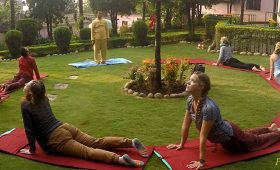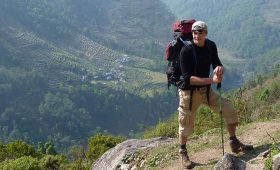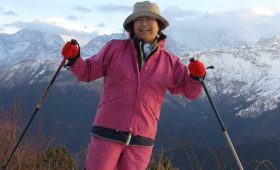Thinking to travel to Nepal soon?
There are some general precautions to take while travelling in Nepal. We believe this article will be useful to the future travellers to Nepal. Many travellers feel confused with the do’s and don’ts in Nepal. So, we have accumulated some useful tips to consider during your Nepal visit.
Visitors ultimately enter into the wilderness while trekking in Nepal. The slightest negligence and misunderstanding on the part of the visitors can directly have a serious impact on the delicate balance of the nature.
Though solo trekking in Nepal is quite popular, there are news of disappearing solo trekkers from remote trekking areas. We strongly advise not to trek alone and hire a local guide or a porter. It is wiser to use registered Trekking Companies to hire guide and porters. It is also useful to check online forums where travellers are looking for fellow trekkers.
Here are some points to consider while travelling in Nepal
- We sincerely discourage campfires in order to save trees and also to avoid possible impacts on the environment.
- Trekkers should not collect any wild flowers, plants, fossils, orchids, rocks unless and until they have permission for the scientific research.
- Trade in wildlife animal products is strictly prohibited.
- Prescribed and managed camp sites are available at various locations. If there is no arrangement as such; open ground or a river bank are considerable. It is important to keep in mind that clearing bushes will damage the local environment.
- Garbage management is an essential part of trekking. No plastic bottles and non-degradable items are allowed within the protected areas. Garbage bins and pits are kept at various points along the trekking routes.
- The mountain parks management has introduced the policy of “Pack It and Pack Out” for the reduction of refuse (including tins and cans) disposal along the routes to some extent.
- In some areas, local communities have established their own conservation practices, such as forest management, energy saving etc.
- With your help, our natural beauty will remain alive for generations. In turn, Nepal’s gift to you will be vibrant living memories.
- The geographically fragile mountains of Nepal are prone to soil erosion triggered by heavy monsoon rains in June through September following the dry period in April-May. At places, trekkers should be extra careful while crossing the exposed slopes along the trails. Falling boulders may cause dangers in the alpine regions.
- Similarly, 26 glacial lakes have been red-marked for their potential outbursts due to heavy accumulation of melted water from glaciers.
- While taking jungle safari activities in Terai protected areas of Nepal, travellers should follow certain procedures and rules. Elephant back-ride, jungle drive, nature walk need special care and precautions.
High Altitude Sickness:
While trekking in the high mountain areas, trekkers need to be extra careful about high altitude sickness. As the atmospheric pressure decreases, the amount of oxygen in the air also decreases exponentially as the elevation increases. At an altitude of 5,500 meters (18,000 ft), the atmospheric pressure will be half that at the sea level and 70% at 3,000 meters (10,000 ft). High altitude sickness can affect a person if climbed too rapidly and without proper acclimatization, especially above 3,000m. The symptoms are– headache, difficulty in sleeping, breathlessness, loss of appetite and fatigue. If anyone develops these symptoms, he/she must immediately stop ascending; and if the symptoms persist, the only proven cure is to descend to lower elevations. Generally, we can minimize the risk by gaining not more than 500 meters altitude per day. It is better to consult registered Trekking Companies to keep a safe trekking in Nepal.




